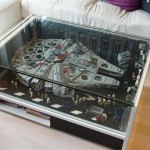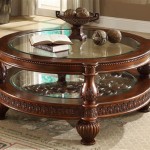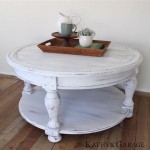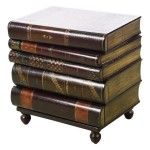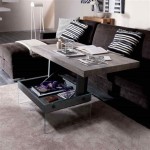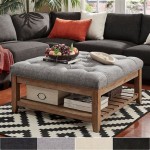Hardware to Make a Lift Top Coffee Table: A Comprehensive Guide
The lift-top coffee table is a functional and stylish piece of furniture that enhances living room versatility. Its primary advantage lies in its ability to transform from a standard coffee table to a raised work surface or dining area. The core functionality of a lift-top coffee table resides in the specific hardware components used to facilitate the lifting and lowering mechanism. This article details the necessary hardware, providing a comprehensive guide for constructing a reliable and aesthetically pleasing lift-top coffee table.
The selection of the appropriate hardware is crucial for the longevity and performance of the coffee table. Low-quality hardware might result in a wobbly or unstable tabletop, a noisy lifting mechanism, or premature failure. Conversely, selecting robust and well-engineered hardware will ensure smooth operation, stability, and extended lifespan. This guide explores different types of lift mechanisms, support structures, and ancillary hardware required to build a functional lift-top coffee table.
Types of Lift Mechanisms
The most critical hardware component is the lift mechanism itself. Several types are available, each with distinct advantages and disadvantages. Common lift mechanism types include spring-assisted hinges, pneumatic hinges, and scissor lift mechanisms. The choice depends on factors such as the desired lifting height, weight capacity, smoothness of operation, and budget.
Spring-Assisted Hinges: These are the most common and generally the most affordable option. They utilize heavy-duty springs to aid in lifting the tabletop. They usually consist of a set of hinges linked by a spring mechanism. The spring counterbalances the weight of the tabletop, making it easier to lift and lower. Spring-assisted hinges are relatively simple to install and provide a good balance between cost and functionality. However, they can sometimes be noisier than other options and may require more effort to initiate the lifting process, particularly with heavier tabletops.
Pneumatic Hinges: These mechanisms use gas struts (pneumatic cylinders) to provide a smoother and more controlled lifting and lowering action. Gas struts offer consistent resistance, preventing the tabletop from slamming down and making the transition nearly silent. Pneumatic hinges are generally more expensive than spring-assisted hinges but offer superior performance and a more refined feel. The gas struts come in varying strengths, selected based on the weight of the tabletop. Proper sizing is critical for optimal operation. If the strut is too weak, it won't support the tabletop; if it's too strong, it will be difficult to lower.
Scissor Lift Mechanisms: These mechanisms use a series of interconnected levers that form a scissor-like structure. They typically provide a larger range of lifting height compared to hinge-based mechanisms. Scissor lift mechanisms often include a locking mechanism to securely hold the tabletop at the desired height. They are generally more complex to install and more expensive than hinge-based options, but they are suitable for designs requiring a significant vertical lift or adjustability.
When choosing a lift mechanism, consider the weight and size of the tabletop. Heavier tabletops require stronger mechanisms to ensure smooth and reliable operation. Check the weight capacity specifications provided by the manufacturer of the lift mechanism. Additionally, consider the range of lifting height provided by the mechanism. Determine the optimal height for the intended use, whether it's for dining, working on a laptop, or other activities.
Support Structure and Reinforcement
Beyond the lift mechanism itself, the support structure of the coffee table is equally important for its stability and durability. The frame of the coffee table must be robust enough to withstand the constant lifting and lowering of the tabletop, in addition to supporting any weight placed on the extended table. This often entails using thicker lumber for the frame and incorporating reinforcement elements such as corner braces or metal brackets.
Frame Construction: Solid wood frames are generally preferred for their strength and stability. Hardwoods such as oak, maple, or walnut offer superior durability compared to softwoods like pine. The frame should be constructed using strong joinery methods such as mortise and tenon joints, dado joints, or pocket hole screws with wood glue. The selection of joinery technique depends on the desired aesthetic and the available tools and expertise. Mitered corners, while visually appealing, are inherently weaker than other joinery methods and require reinforcement with corner braces or splines.
Corner Braces: These are metal or wooden supports that reinforce the corners of the frame. They prevent the frame from racking or twisting under load, particularly when the tabletop is extended. Metal corner braces are typically made of steel or aluminum and can be attached using screws. Wooden corner braces can be glued and screwed into place. The size and thickness of the corner braces should be proportional to the size and weight of the coffee table.
Metal Brackets: In addition to corner braces, metal brackets can be used to reinforce other critical joints in the frame. These brackets can be L-shaped, T-shaped, or custom-designed to fit specific areas of the frame. They provide additional support and prevent the frame from separating under stress. Metal brackets are particularly useful in areas where the wood may be weaker or subject to significant stress, such as the points where the lift mechanism is attached.
Internal Support Structure: Depending on the design of the coffee table, an internal support structure may be necessary to provide additional stability. This could consist of a central beam running lengthwise under the tabletop or additional crossbeams that connect the sides of the frame. The internal support structure helps distribute the weight of the tabletop and prevent it from sagging or warping over time.
The attachment of the lift mechanism to the frame is critical. Ensure the mounting points are securely fastened to the frame using screws or bolts. Consider using threaded inserts in the wood to provide a stronger and more durable connection. The lift mechanism should be aligned properly to ensure smooth and even lifting and lowering of the tabletop. Misalignment can cause binding or uneven weight distribution, leading to premature failure of the mechanism or damage to the frame.
Ancillary Hardware and Considerations
In addition to the lift mechanism and support structure, several ancillary hardware components contribute to the overall functionality and aesthetics of the lift-top coffee table. These include hinges, latches, handles, and protective hardware.
Hinges: Standard hinges connect the lifting tabletop to the stationary portion of the coffee table. The choice of hinge depends on the desired aesthetic and the thickness of the wood. Butt hinges are a common choice for their simplicity and durability. Concealed hinges offer a cleaner look by hiding the hinge mechanism from view. Overlay hinges are used when the tabletop overlaps the frame of the coffee table.
Latches: Latches are used to secure the tabletop in the closed position. They prevent the tabletop from accidentally lifting up or sliding around. Magnetic latches are a popular choice for their ease of use and clean appearance. They consist of a magnet attached to one surface and a metal strike plate attached to the other. When the tabletop is closed, the magnet attracts the strike plate, holding the tabletop securely in place. Other latch options include spring-loaded latches and friction catches.
Handles: Handles can be attached to the lifting tabletop to make it easier to grip and lift. The choice of handle depends on the desired aesthetic and the size of the tabletop. Simple knobs or pulls can be used for smaller tabletops, while larger tabletops may require longer handles or bar pulls. The handles should be securely attached to the tabletop using screws or bolts. Consider using backing plates to distribute the load and prevent the screws from pulling out of the wood.
Protective Hardware: This encompasses items that protect both the table and its surroundings. Felt pads or plastic glides can be attached to the bottom of the legs to protect the flooring from scratches. Edge banding can be applied to the edges of the tabletop to prevent chipping or damage. Corner protectors can be installed on the corners of the tabletop to prevent injury from sharp edges.
Screws and Fasteners: The selection of appropriate screws and fasteners is essential for the overall strength and durability of the coffee table. Use high-quality screws made of steel or brass. Avoid using soft or brittle screws that can easily strip or break. The length of the screws should be appropriate for the thickness of the wood. When attaching hardware to hardwoods, pre-drilling pilot holes is recommended to prevent the wood from splitting. Consider using threaded inserts in areas where screws will be frequently removed or tightened. Use wood glue in conjunction with screws to create a stronger and more durable bond.
When selecting hardware for a lift-top coffee table, it's imperative to prioritize quality, durability, and functionality. Purchasing from reputable manufacturers and suppliers will ensure the hardware meets industry standards and is designed to withstand the rigors of everyday use. Before beginning construction, thoroughly review the manufacturer's instructions for the lift mechanism and other hardware components. Proper installation is critical for ensuring the smooth and reliable operation of the lift-top coffee table. A carefully planned and executed hardware selection process will result in a functional, durable, and aesthetically pleasing piece of furniture that provides years of enjoyment.

Diy Lift Top Coffee Table Step By Instructions Chisel Fork

Diy Lift Top Coffee Table Step By Instructions Chisel Fork

How To Make A Coffee Table With Lift Top 18 Steps Pictures Instructables

Installing Lift Top Coffee Table Hinges

Lift Top Table Hardware Work Supply

Maxbell Diy Coffee Top Table Lift Fitting Furniture Mechanism Spring Hinge Hardware At Rs 5117 99 New Delhi Id 2851597697762

How To Make A Coffee Table With Lift Top 18 Steps Pictures Instructables

Diy Lift Top Coffee Table Step By Instructions Chisel Fork

Diy Lift Top Coffee Table Cut List Assembly Modern Farmhouse Breadboard Ends

Lift Top Coffee Table With Storage Transformer
Related Posts

